Paiva Walkways Road Trip: From Conímbriga to Arouca
Long were the days where road trips meant recording CDs with endless playlists. Staying awake was a struggle, but it was a sign of resistance!
Often, we resorted to little games to make time go by faster. We would count the number of black cars passing by or punch someone when we saw a yellow one. Nowadays, we settle for the radio and let the car rock us to sleep like a baby.
Thanks to the revolutionaries of 1974, Portuguese people now have a long weekend to get away or binge-watch a series on Netflix. To me, it was time for a family trip.
Conímbriga
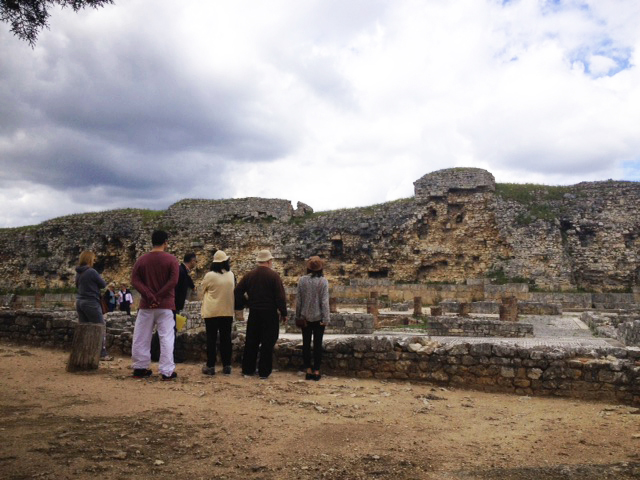
We booked a guided tour of the Conímbriga ruins at 11:30 a.m., so we had to wake up early and head to the São Sebastião metro station in Lisbon to meet my dad.
I learned about the Romans a long time ago on my history lessons. At the time, I was so concerned about memorizing dates, that I never really admire the great things they left us. From roads to aqueducts and bridges, you can find traces of their presence all over Portugal.
Besides the temple in Évora and a couple of bits here and there, I’ve never seen remains like the ones found in Conímbriga. Much like the Roman Galleries in Lisbon, this structure dates back to the 1st century BC. However, they only discovered them at the end of the 19th century!
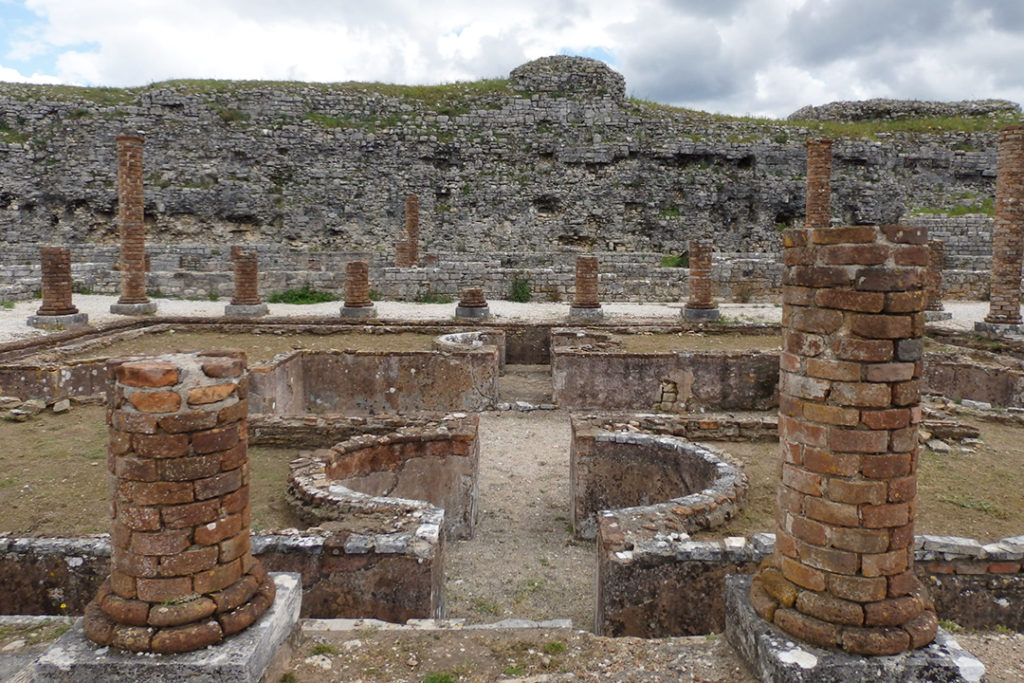

Visiting Conímbriga
You can visit the ruins every day (except certain holidays), from 10 a.m. to 7 p.m. A ticket costs on average €4 per person. For guided tours, it’s best to book in advance with the museum by sending an email.
How to get to the ruins: The best way to get to the ruins is to drive there, but you can also get a bus from Coimbra. When you arrive in Coimbra, you can check with the local tourism board which bus you need to take and the schedules.
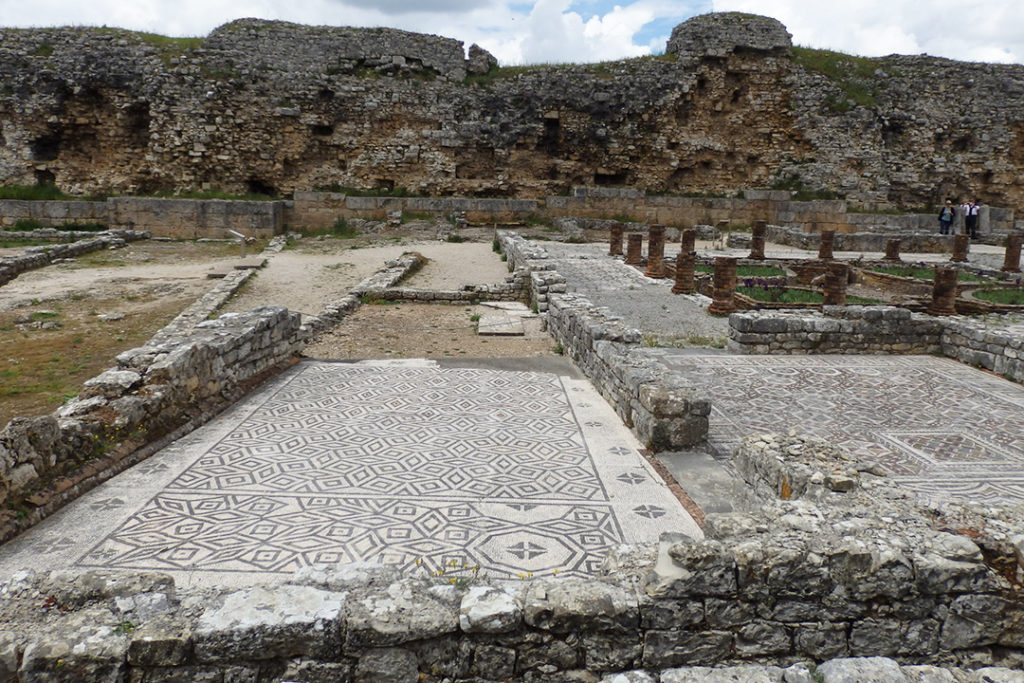
Endless stone structures and remarkable floor pavements await you in this small town near Coimbra.
Along with the outdoor area, you can also visit the museum, which features unique items like coins, kitchen utensils, and even hair accessories!
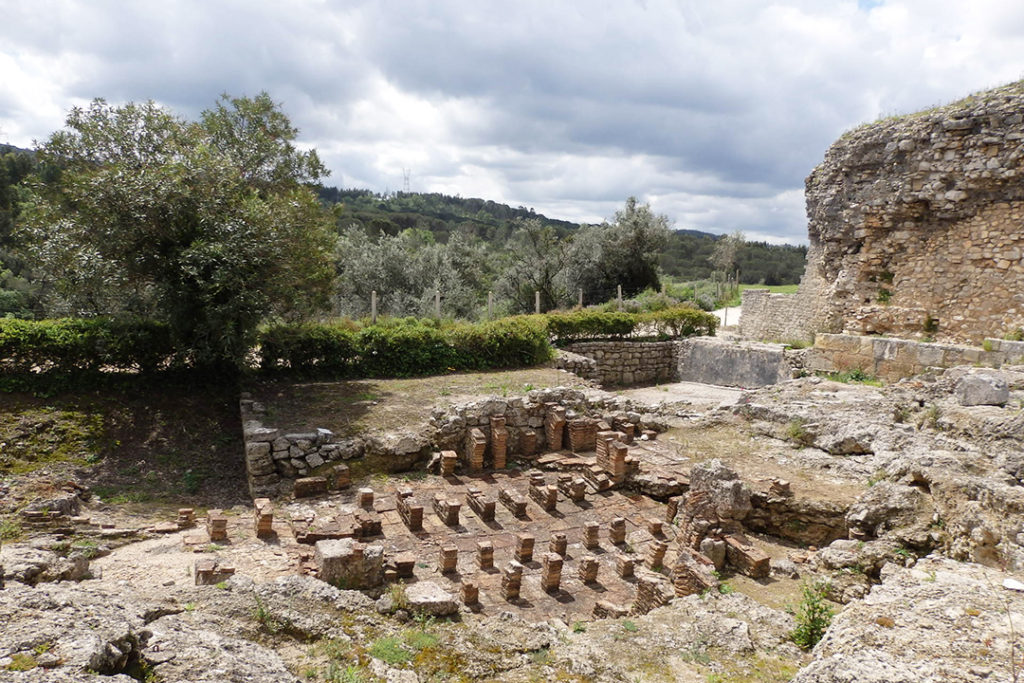
Bussaco
As much as I wanted to visit Bussaco, we had to make a small stop first at Rei dos Leitões. Vegetarians beware, this restaurant is not for you! The King of Suckling Pigs — as you would call it in English — has pigs in all shapes and forms. I’m not talking about the food here, but rather the extreme decoration with pig-related toys and statues.
If meat IS a part of your diet, then go ahead and try Leitão à Bairrada. Make sure to bring friends with you because there will be plenty to share!
With our stomachs full, I was looking forward to seeing the Bussaco Palace in person. Similar to Sintra, this area is surrounded by green woods and photo-worthy scenarios.
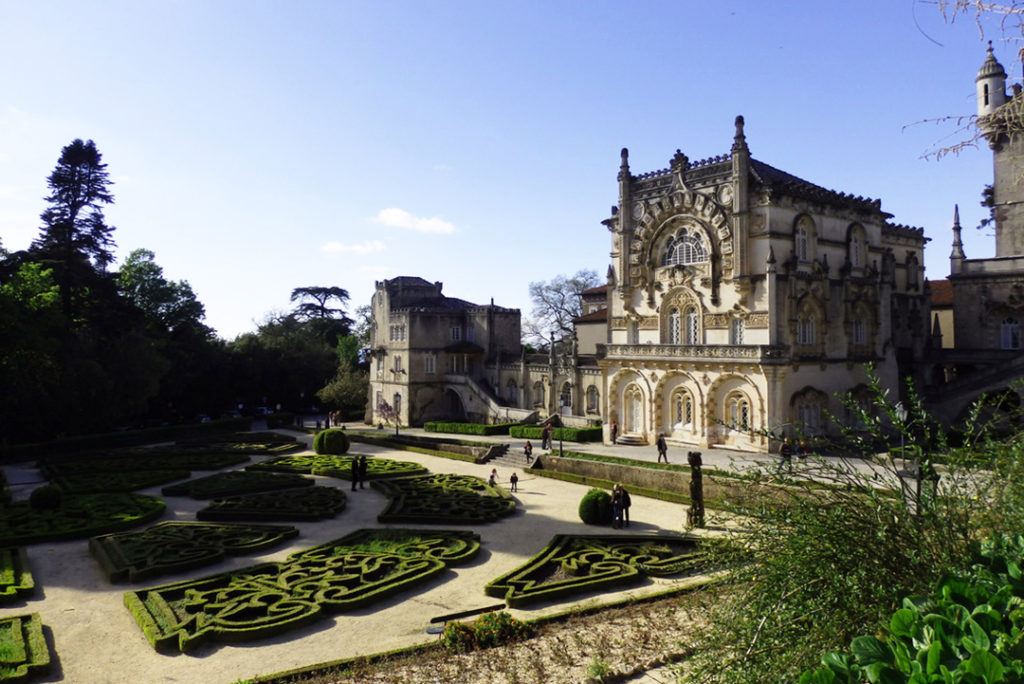
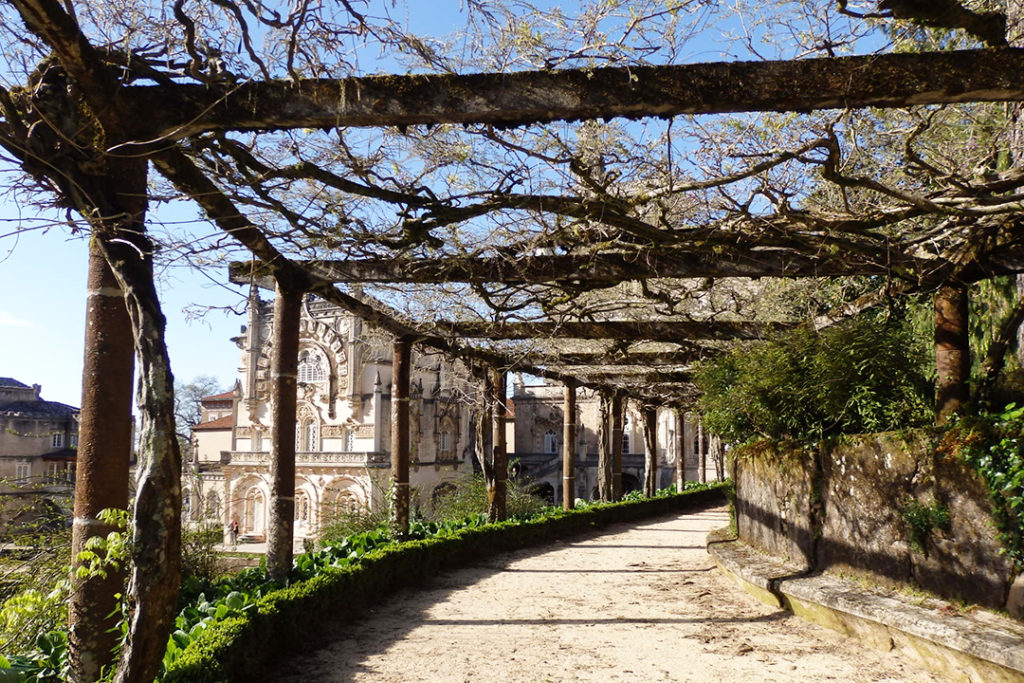
The palace’s architecture reminded me of the Jerónimos Monastery in Lisbon. I later found out that it was inspired by it, along with the Belém Tower.
I was particularly eager to find the spot where you can see the reflection of the palace. After a few minutes, I crossed paths with a Chinese group who had beat me to it! No worries, I got a shot of it in the end 🙂

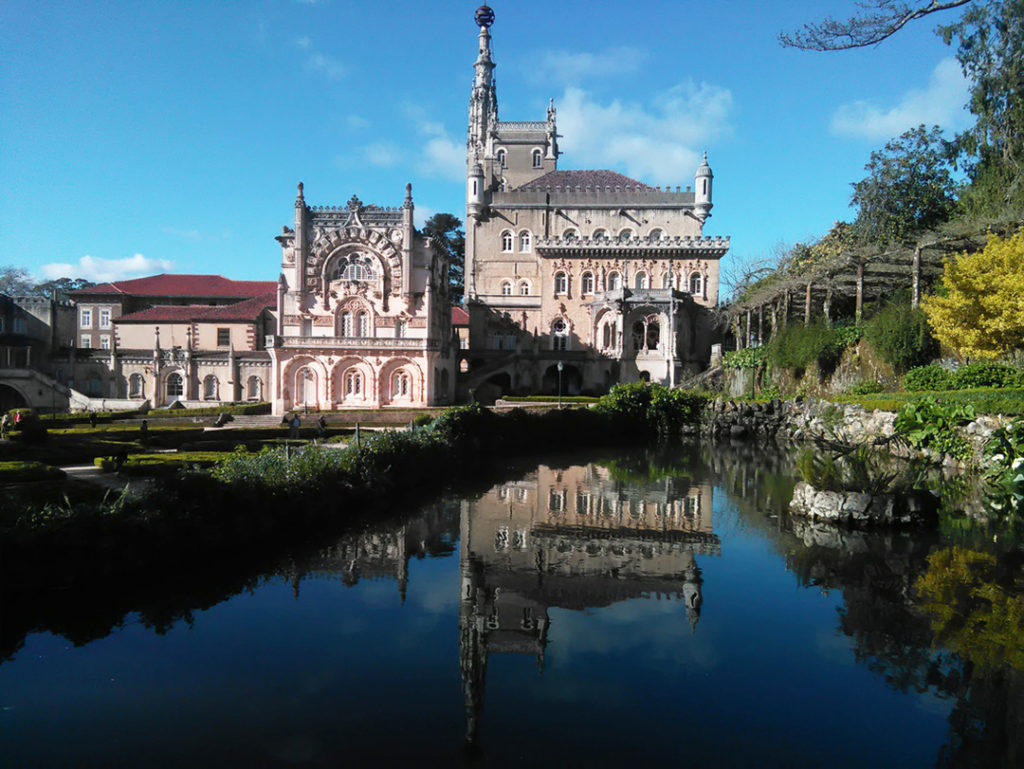
Arouca
Arouca was the main stop of our road trip, so we searched on Airbnb and rented a house there. Maria de Fátima welcomed us as soon as we arrived. She took care of dinner and booked us a table at Assembleia — a restaurant specialized in veal dishes.
After eating so much red meat, the grilled salmon the next day was more than welcome!
I’m used to waking up to loud alarms and hitting snooze countless times, but here the birds were enough to make me jump out of bed. We also had sheep in the garden, who greeted us every day 🙂
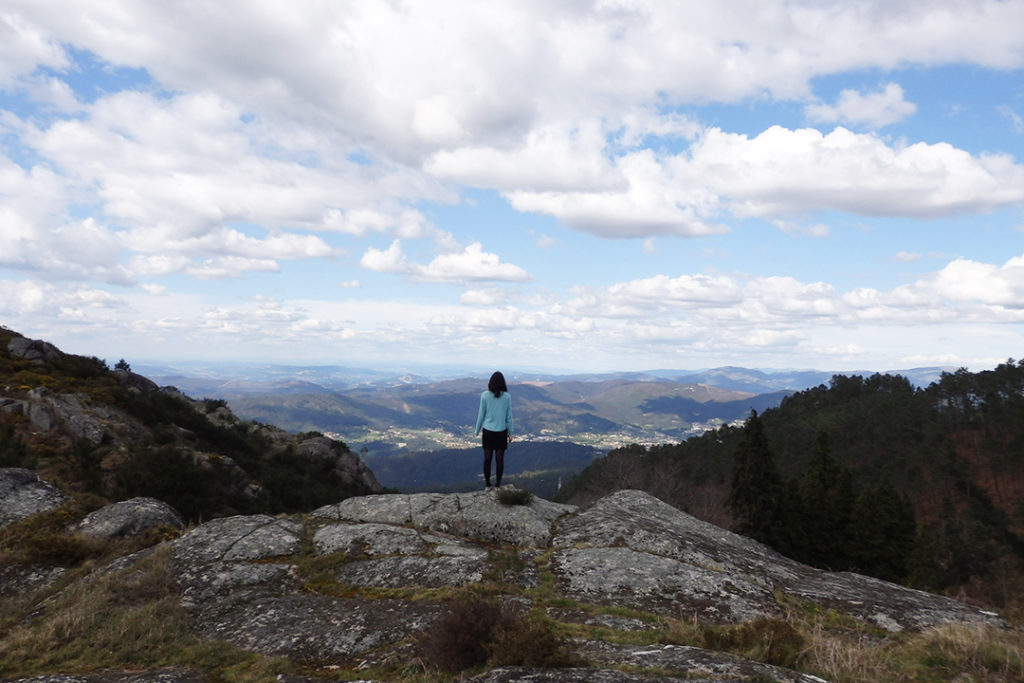
While we were waiting for lunch, I had a look at the map of the area and found a couple of things worth seeing:
- Frecha da Mizarela: the largest waterfall in Continental Portugal;
- Serra da Freita: a mountain where you can admire the valleys and scream whatever comes to mind;
- Radar Meterológico: a tall weather station where you have a bird’s-eye view of the surrounding towns. Most of these towns have less than 30 residents!
- Casa das Pedras Parideiras: the source of a geological phenomenon that makes stones pop out of rocks every once in a while.
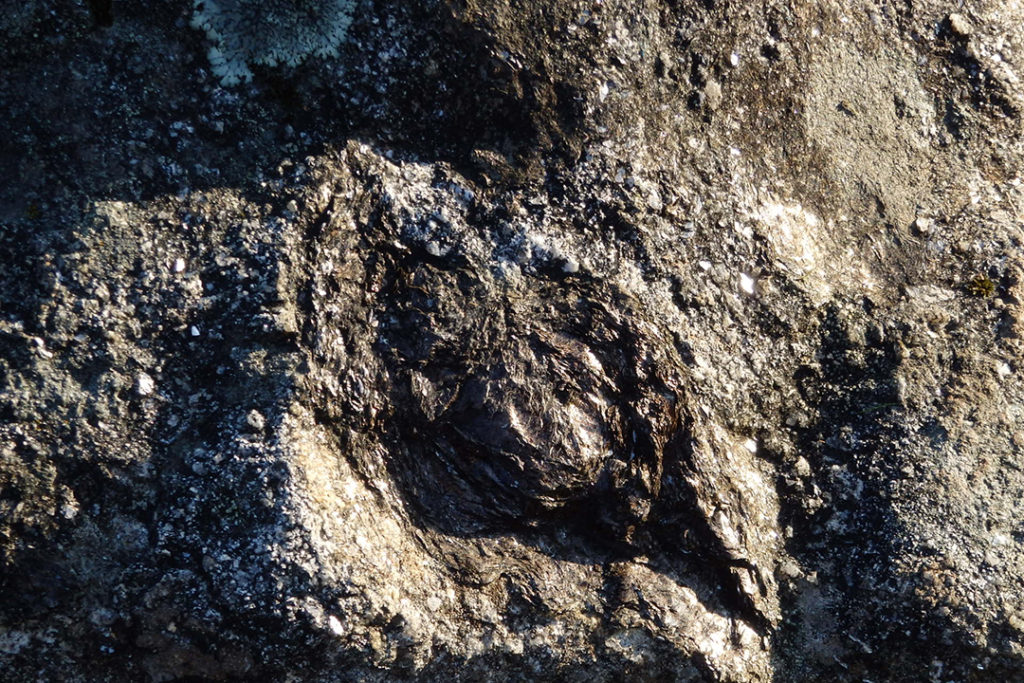
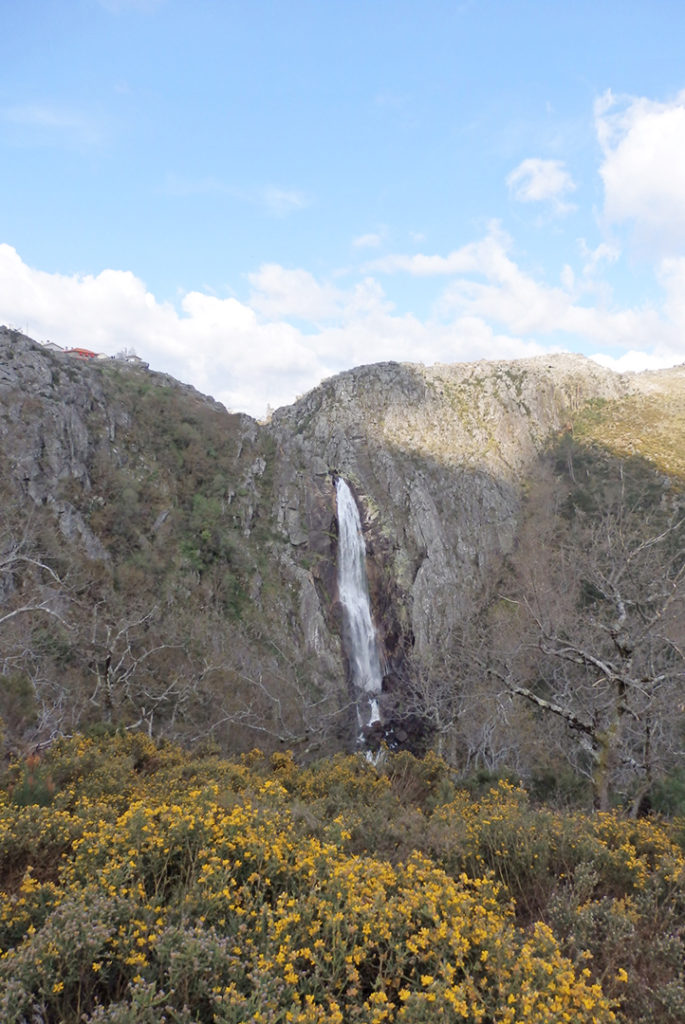
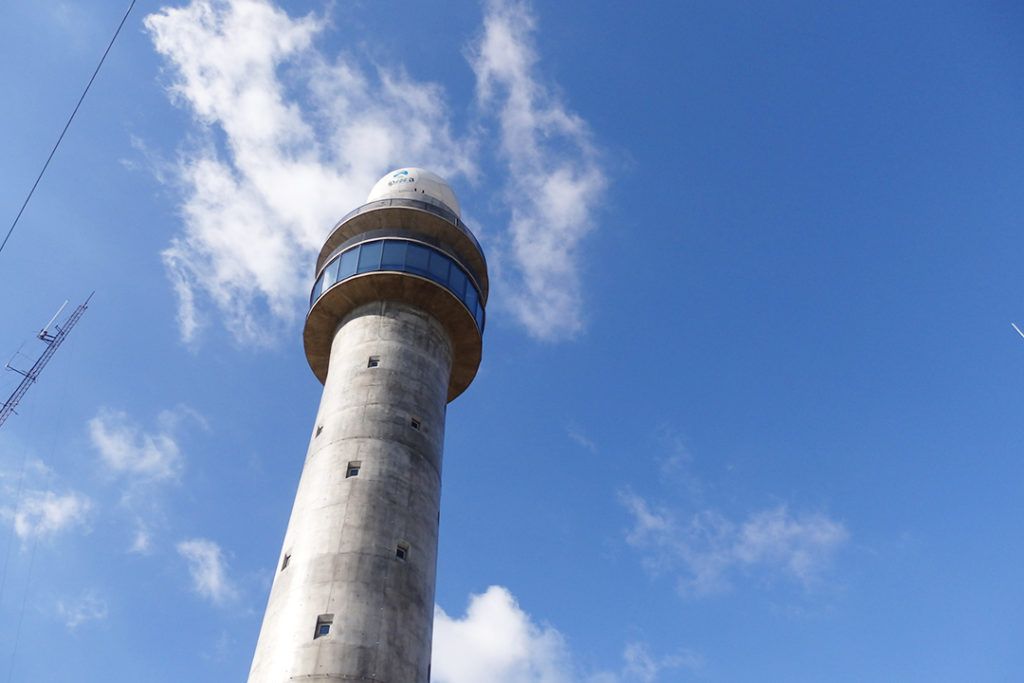
Paiva Walkways
We checked everything from that list in one day, but we were still missing one — Passadiços do Paiva or the Paiva Walkways.
Trusting the GPS tricked us twice, and we ended up literally on goat paths in the middle of nowhere. If you suffer from motion sickness, this will probably be your worst nightmare!

How to get to the Paiva Walkways?
After asking around a couple of times, we made it to Espiunca, one of the main entrances to the walkways.
The other one is Areinho, which, according to some people, is the hardest way to go. By the end, I couldn’t tell which one was worst!
Here are driving directions, and GPS coordinates to help you find each entrance.
Paiva Walkways tickets: Tickets cost €2 and can be purchased online in advance. Opening times vary with the season, so make sure to check the website before you go.
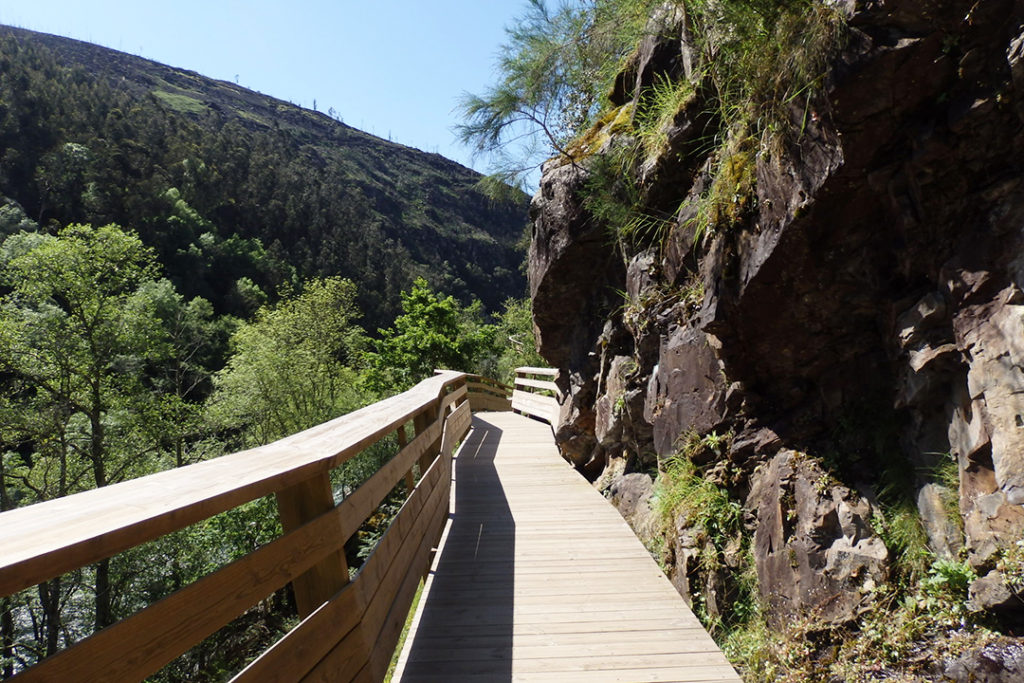

The scenery was overwhelming at first. The sight of the mountains and the Paiva river was worthy of multiple shots. Halfway there and we no longer needed the camera. Our eyes captured the sights, while our feet did all the work.
It took us almost four hours to finish the 8km stretch, with a couple of stops here and there, mostly to gain the courage to climb the scary-looking stairs in the distance.
Luckily, we made it to the end, and we reward ourselves with a cold drink at the river beach. It was so hot that I almost forgot it was April!
If you are brave enough, you could do the round trip, but most people choose to take the bus on the way back — smart people, I call them.


Driving back is always the hardest part of a road trip. In a matter of hours I saw the sky turn red, then blue and slowly the stars took over.
Halfway to Lisbon, we stopped to stretch our legs, and I realized how much my dad drove this weekend. Kudos to him for making this trip happen!
I struggled to find a comfortable position in the car before I fell asleep again. When I woke up, we were back in the city — drinking tea and watching Game of Thrones at 11 p.m. — that’s how you should spend every holiday!
